A Tale of Mountain and Cloud, Chapter 1
Field Notes III.XXXIII: Backpacking and photographing the Shining Rock Wilderness, NC
Welcome to Field Notes!
Across the earth there exist certain places saturated with magic. This is ancient organic magic that clings to the bones of mountains and flows freely in wild streams. Clouds carry it across these hallowed lands and all of the flora and fauna are nurtured by it.
What draws us to these places time and time again? It may be that they are colored by our own memory and experiences. Or, the character of the land unexplainably mirrors our own. Either way, when you find such a place there is no doubt you belong there. Its magic has seeped within you and now animates your muscles and breath. This place is home, even if just for a short while.
Deep in the mountains of Western North Carolina is an area of such magical enchantment. This is the Shining Rock Wilderness. I’ve visited those grassy Appalachian balds since I was a child, have slept on their peaks under a ceiling of brilliant stars, and traversed ridges and valleys through storm, fog, cold, heat, and unrelenting sun. From the most remote hollows of Shining Rock floats a soft Siren’s call that will always draw me back.
My kids have been there with me on several occasions, but never actually backpacking. So, when my son Ethan asked to go on a backpacking trip before returning to college in mid August, Shining Rock was the first choice in mind. And he was excited! I still remember standing with him at Ivestor Gap on a day hike when he was 10 years old. He dreamed of camping there one day. Now we would finally get the chance.
It took until early August to co-ordinate schedules for the trip. That’s a brutally hot time of year in the South. The spots we plan to visit are above tree line, with no relief from the sun. I buy cooling towels that I envision draping around my neck as we walk.
Other equipment we already have, though. His lightly used Osprey backpack from when he was younger has an adjustable torso length and fits him well. He will use my old sleeping bag and pad. I’ve upgraded over recent years, but these are still serviceable. We can share the smaller items like water filter and stove.
A tent for Ethan is a bit more problematic. My current one is a solo tent. My only old one suitable for backpacking is a very cramped, ancient thing. Its little more than a bivy sack with support at the head and feet. I show it to him, but he has no qualms about its tight quarters.
The date of the trip draws close and circumstances suddenly change. A rare and extremely unseasonable weather front brings days of heavy rain and cool temperatures. It is difficult to know what that means for the mountains, but the prediction is for rain every day and temps steady in the mid 50’s.
Perhaps age has rendered me more cautious lately. Maybe its the experience of knowing how miserable those conditions can be in the wild. A lot has to do with just how strongly I want Ethan to have a great experience on this trip. So, I tell him what we are looking at and hint vaguely at the possibility of postponing or cancelling.
“Oh, we’re definitely still going!”
Was it me looking for an out in the face of these conditions, after all? Ethan’s answer removes that possibility and as soon as it does I am glad. There’s nothing to do now but prepare for cold and wet.
Rain hammers down overnight and continues for most of the three hour drive to the trailhead at the ominously named Graveyard Fields. It finally abates as we meander along the windy Blue Ridge Parkway. Rather than falling to earth, though, the water just hands suspended in the air as a nearly impenetrable fog.
We hoist our packs in the parking lot. In the direction of what I know to be a scenic view across the valley to Graveyard Ridge, all we see is a wall of gray. It’s as if we are standing at the outer limit of the material world.
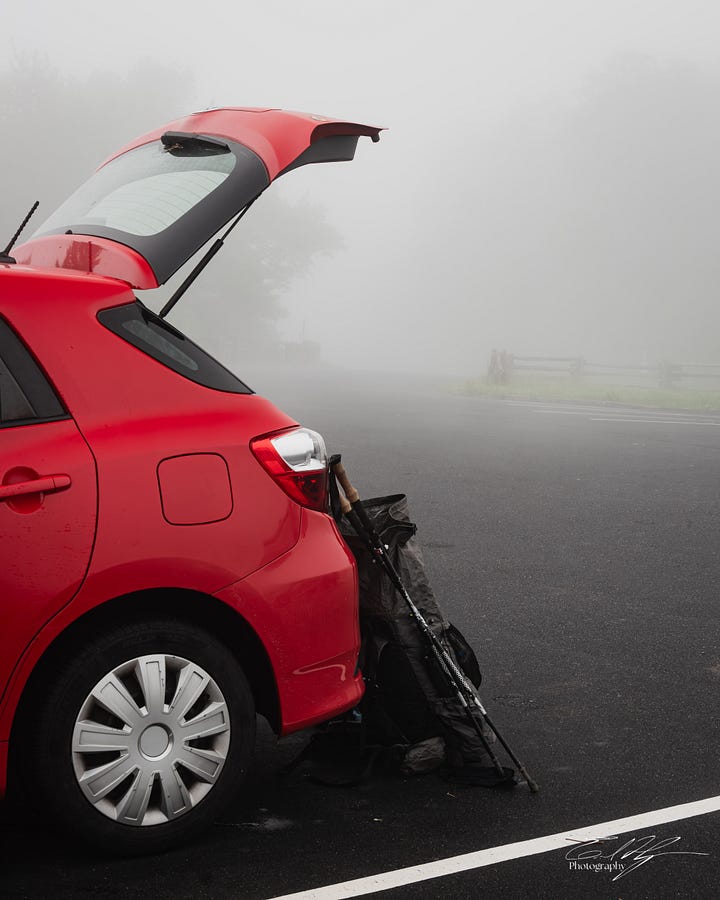
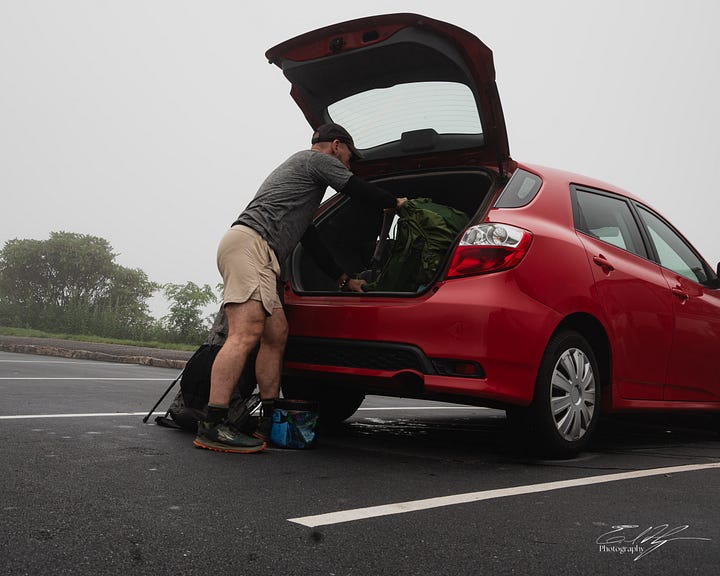
A steep stairway drops us quickly downward from the parking lot towards the river in the valley ahead. Immediately we are wrapped in a lush milieu of greenery. Large stands of jewel weed grace the edges of the trail with glistening beads of water on the leaves and small flowers of brilliant orange.
The smell of wet vegetation and dirt hangs heavy in the thick cool air. We’ve scarcely begun and are already immersed in vibrant life.
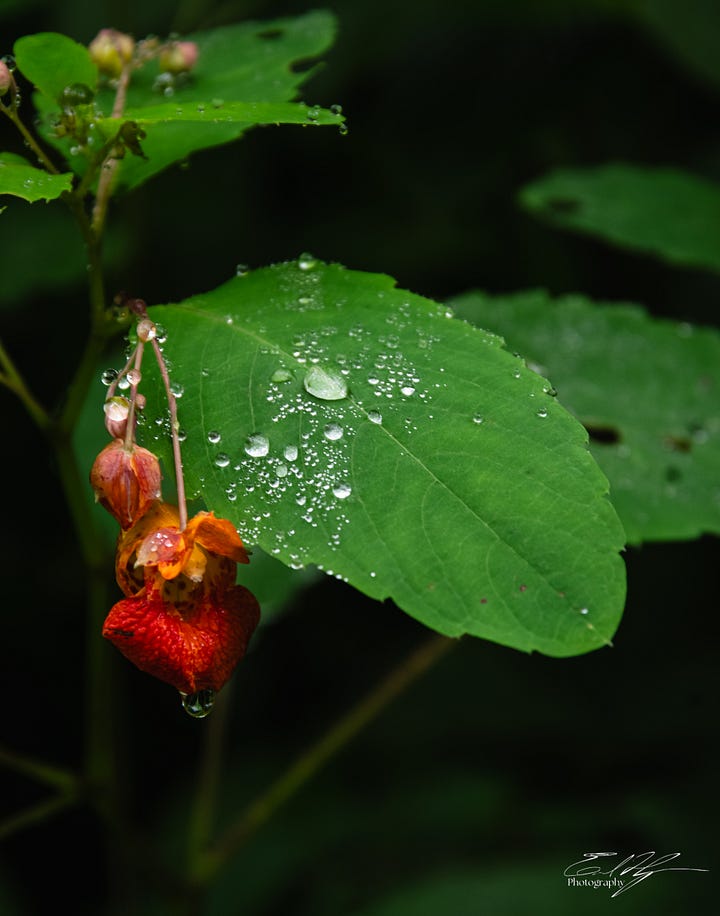
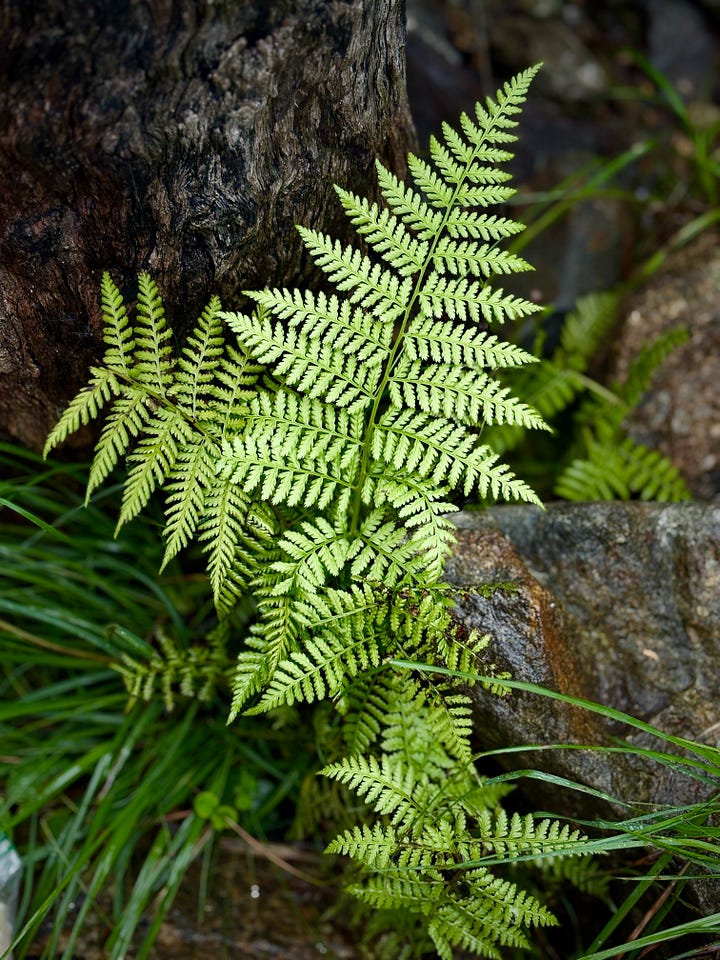
Very soon we arrive at the rushing waters of the Yellowstone Prong. A bridge spans its tumbling cascades as they pour downward towards the lower falls. Our plotted path is upstream, though. We are heading to the upper falls.
The trail is mostly straight and flat. It pushes through sopping wet vegetation and my shoes quickly become soaked. Graveyard Fields is a patchwork of stunted forest and overgrown fields, a slow ecological succession after forest fires left the area barren many decades ago.
Various flowers are in bloom at this time of year. Some I am familiar with and some I am not. The brilliant colors gleam in the gloomy weather. As we walk, I tell Ethan of times past that we visited this area. He was so young then, I think he can’t possibly remember. Still, we reach a towering hemlock and as we stand under it he recognizes it. He, his younger sister, and I once sheltered under this same tree in a storm before having to turn back. That was so many years ago.
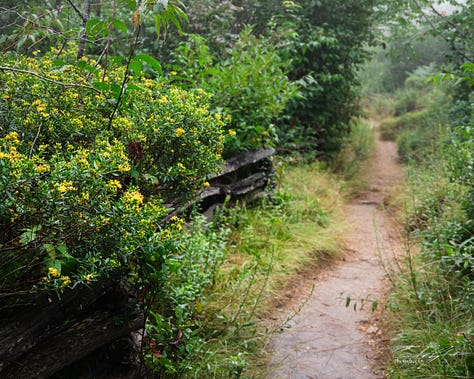
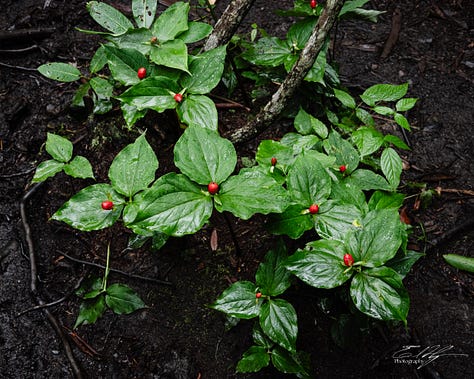
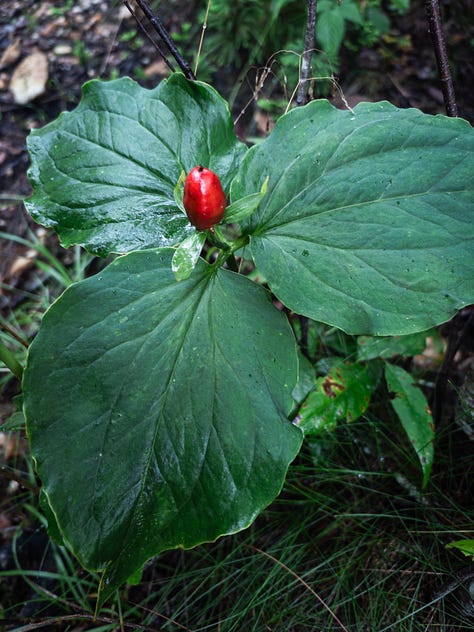
A mile upstream and we reach our destination, the Yellowstone Branch Upper Falls. One of the stream crossings along the way revealed tawny stones in the water, which is undoubtedly where the branch gets its name.
Enormous boulders sit at the base of this waterfall, which consists of a meandering runnel splashing down an angled rock face. We drop our packs here for a while. It is already noon, so we dig though our food supply for lunch.
I search for a photograph of the falls, but the area we are positioned on is too close for a good perspective. Anything more would require a scramble across slick wet rocks. With much more ahead of us, that is time I do not want to spend and a risk I do not want to take.
We pack our bags and continue on. From the falls, we re-trace our steps to a previous junction, taking the adjoining trail. Now we begin to climb.
Steep sections are short. We are ascending Graveyard Ridge, on the other side of the valley from our starting point. Much of the trail follows an old road. Or maybe it was a logging railroad in a past era. Now it lives on as a rocky foot path leading us upward along a gentle grade.
It’s blueberry season. And blackberry, too. They grow abundantly in many of the open spaces we wander through, reaching their berry laden branches toward the trail in offering. As with any wild berry, there are many not yet ripe, and many more past their prime. I eagerly pluck the good ones and snack as we walk.
Also attracted to the berries are the bears. We don’t see any bears, but do find plenty of signs. Scat lies in the center of the trail in a few places, fresh and purple from so much grazing on the sweet berries.
Yellow flowers grow in large patches, maybe black-eyes susans? And small white blooms that could be some type of aster. A few tall orange blooms stand above the others, and I think these are tiger lilies.
All of these beautiful blooms are framed by the mist that lingers at our periphery. That mist carries mystery and magic, as if by limiting my vision it augments the smells of the earth and the sounds of the wind and splattering water drops from the trees.
Yet, at the same time, I feel a bit discontented. There are gaps in the trees as we climb. I know that they offer more views across this valley, but beyond a few yards my son only gets to see the ever present fog.
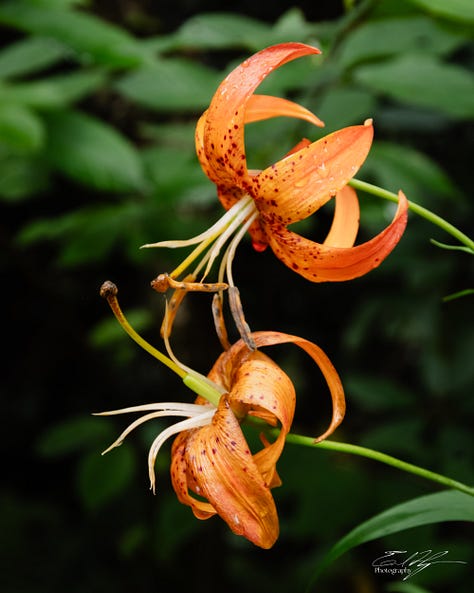
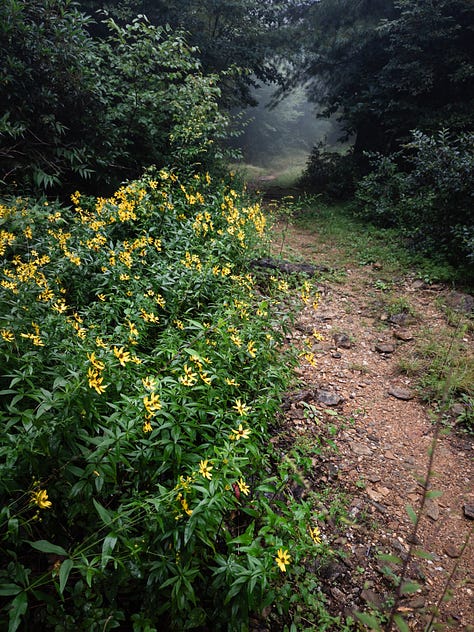
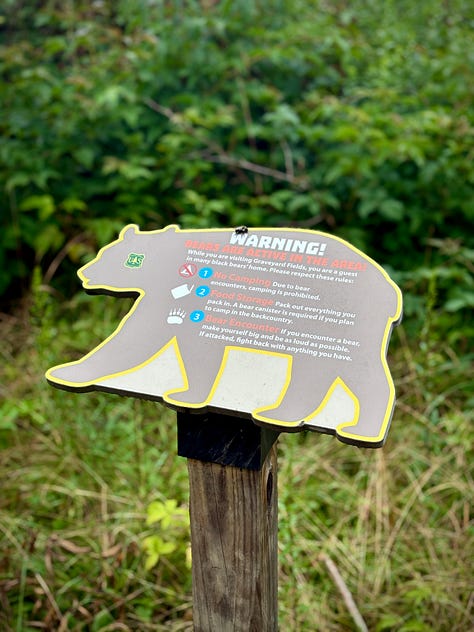
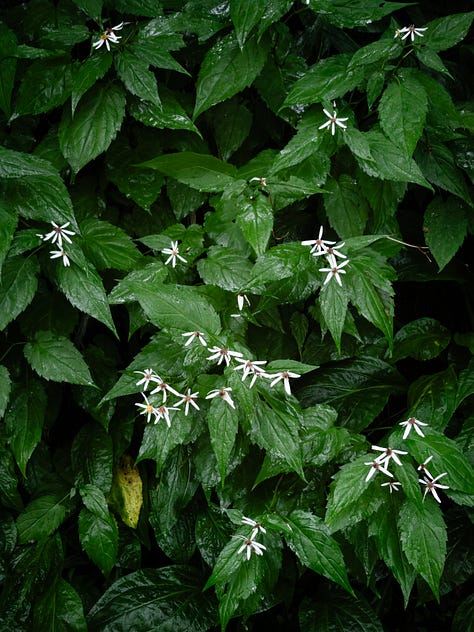
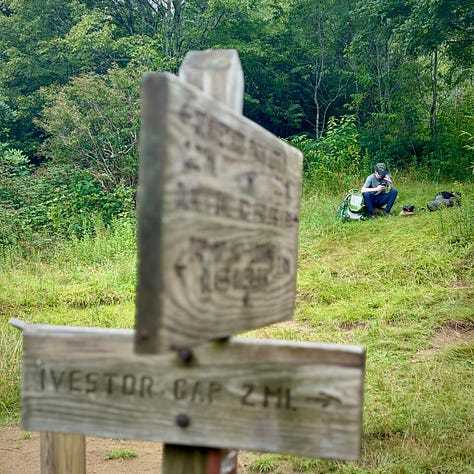
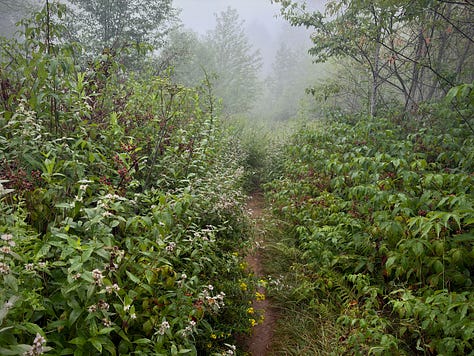
At Black Balsam Junction we take another rest. This is a junction of trails that we will return to on our way back on the third day. It is a short break with a quick snack and we are once more on our way.
This next stretch of trail contours along the side of Tennent Mountain, still leading us gradually higher and into denser cloud. The trees make way to large patches of rhododendron, now past their time of blooming.
We arrive at Ivestor Gap in the late afternoon. Though not quite above tree level, this gap has wide open grassy fields and numerous options for camping. It’s the spot Ethan wanted to camp at all those years ago.
I have a decision to make. The day is still early for making camp and the hike to the top of the 6000ft Mt Tennent is not too much further. Several times I have camped on its peak, seeing the milky way stretched above and awakening to seas of cloud inversions. But the last weather forecast I saw gave a chance of storms overnight. Up there, there is no place to escape. We would be totally exposed.
So, I opt to stay here. With luck, conditions would be clearer tomorrow and we could make it to the peak in the morning.
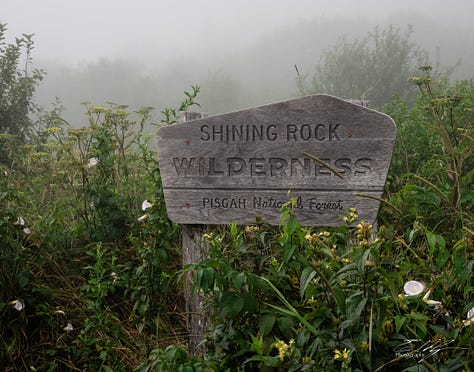
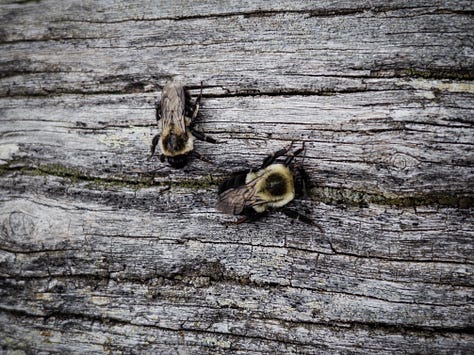

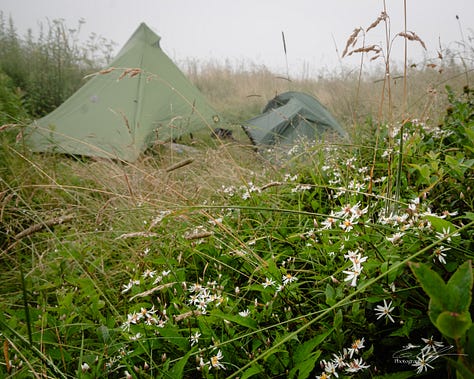
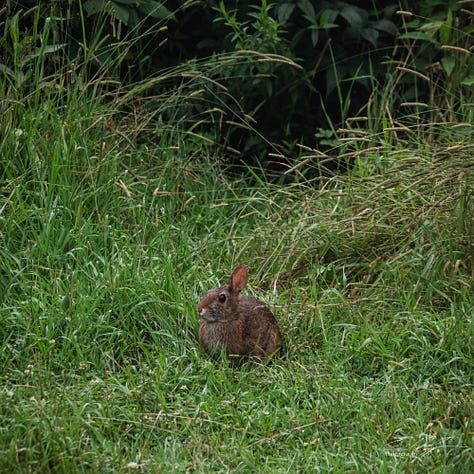
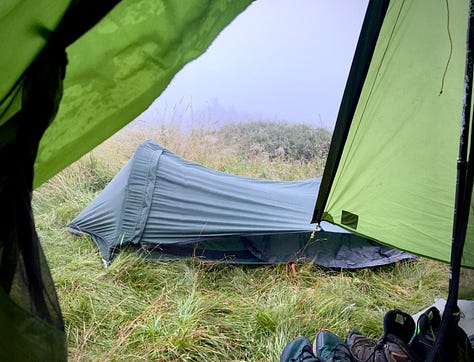
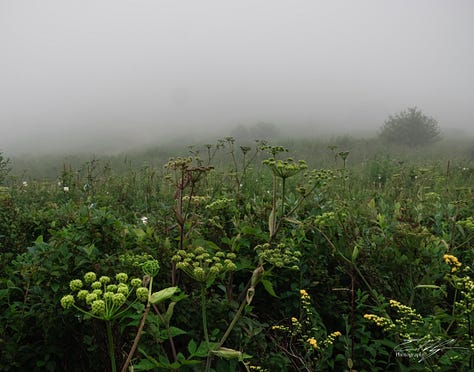


With plenty of time at hand, we explore the area. The vegetation is much more overgrown that I remember, but that could be the difference between August and October or early June, when I’ve come in the past.
Cobwebs glisten in the wet grass. An intrepid rabbit claims a tent site, but it is not one that we wanted anyway. We walk through dense fog to a tiny stream I know of nearby to collect water for the night. Delicate vines of morning glory curl throughout the brambles all around.
We find a flat spot to pitch our tents, abutted against some shrubbery to protect us somewhat from wind or storm overnight. But there is a problem.
As we pitch the cramped old bivy tent Ethan it going to use, the fabric immediately becomes wetted through just from the amount of ambient moisture in the air. The outer rain fly is pressing on the inner tent, and the tent floor is becoming wet.
My mind races back. Surely I’ve used this tent in the rain before, right? But now I can’t think of a time that I have. We are not in a good place to discover that it doesn’t repel water.
Ok. I offer two options. We can find a fix for the tent so he can still use it or we can both cram into my tent and use his to store our gear. He wants to try to fix up the bivy tent and sleep in it.
I take the ground sheet from under my tent and we work it underneath his. That will protect him from moisture from below. Then, we take my poncho and spread it in between the rain fly and the tent. Now, even if it rains, the water won’t get through the poncho to get him wet inside. Hopefully.
I worry because I don’t want him to be miserable. I let him know that if anything happens overnight he should wake me and come over into my tent. But none of this perturbs him and he offers not one word of complaint.
I settle into my tent and scribble in my notebook, slowly succumbing to the exhaustion of the day. The world dims and soon there is darkness and then only the muted sound of eternal cloud wafting across the surrounding mountain peaks. This is home.
I hope you’ve enjoyed the start of this trip to Shining Rock! I’ll likely finish the story in Chapter 2 next week. Will we get wet? Will the clouds lift to give us any views? We’ll find out next time!
As a side note, this is the same route I took in October of 2023 when I made the photograph on the bookmark that I offer below.
If you’ve made it this far into the post it’s pretty clear that you can read. But isn’t reading a physical book so much better than reading on a computer or a device? Well, if we’re reading physical books we need a bookmark. Luckily, I have one to offer! This bookmark of a sunset on Sam Knob in the Shining Rock Wilderness is $5. That includes tax and postage to mail it to any country in the world. Purchase it via the PayPal link below.
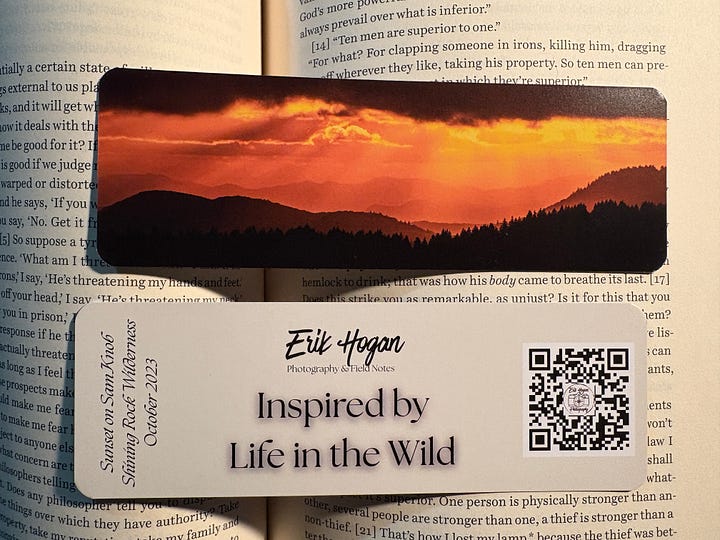

Field Notes is a value-for-value proposition. If you get value from it, please consider contributing back by sharing, subscribing, or upgrading. Also, a one time tip of any amount goes a long way. Your support goes directly towards the food, supplies, or gear necessary for the photography, writing, and adventures that I share-





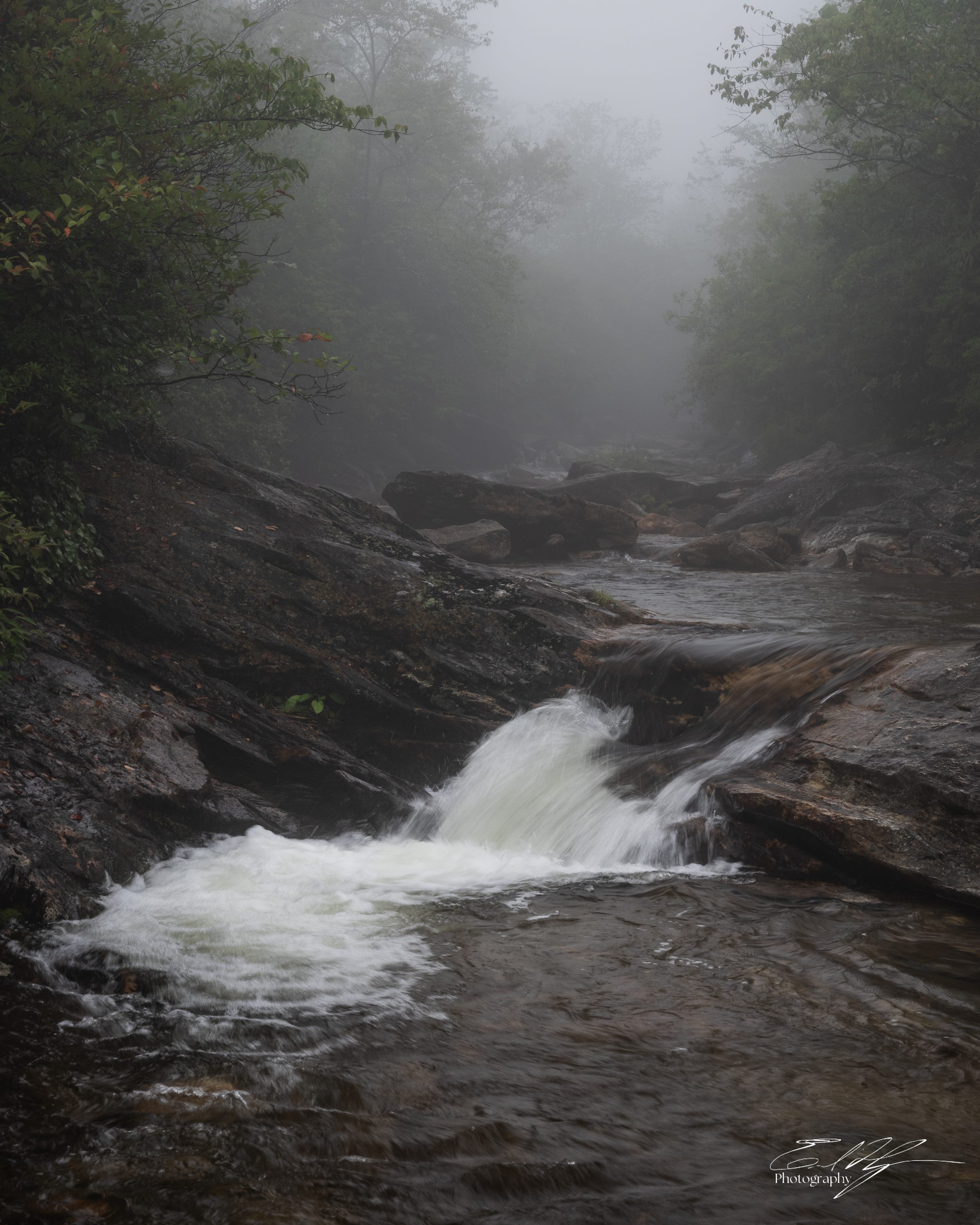
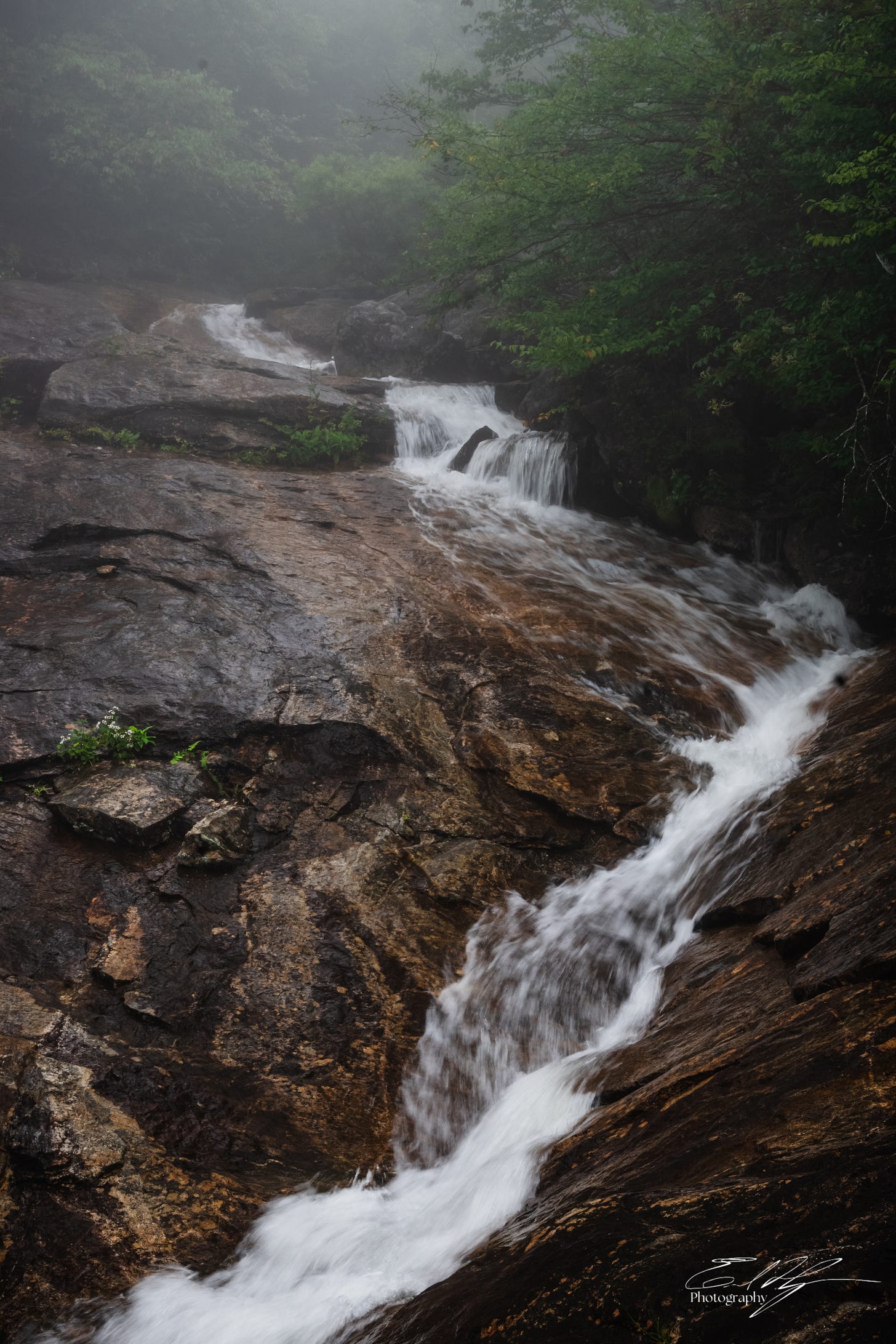
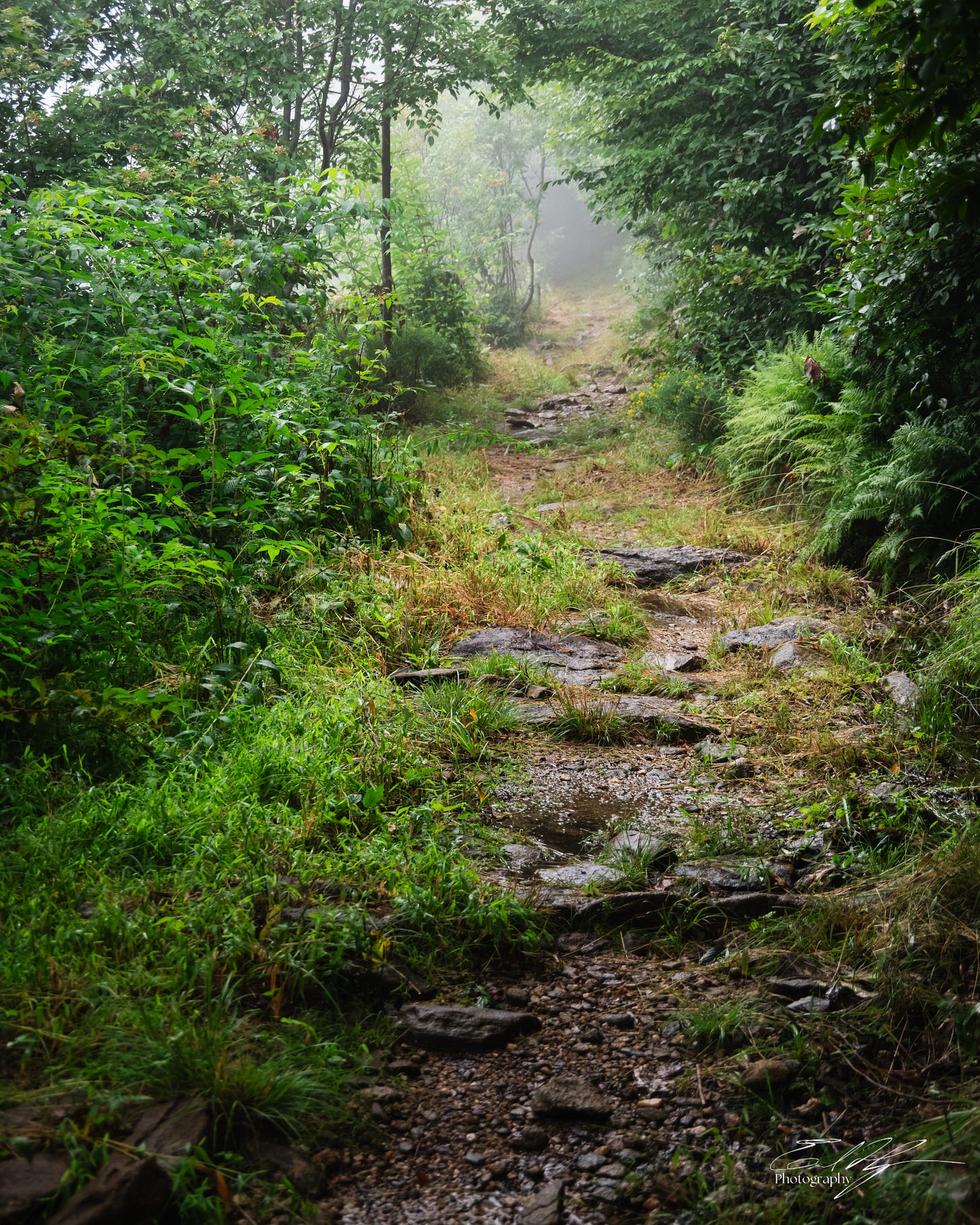
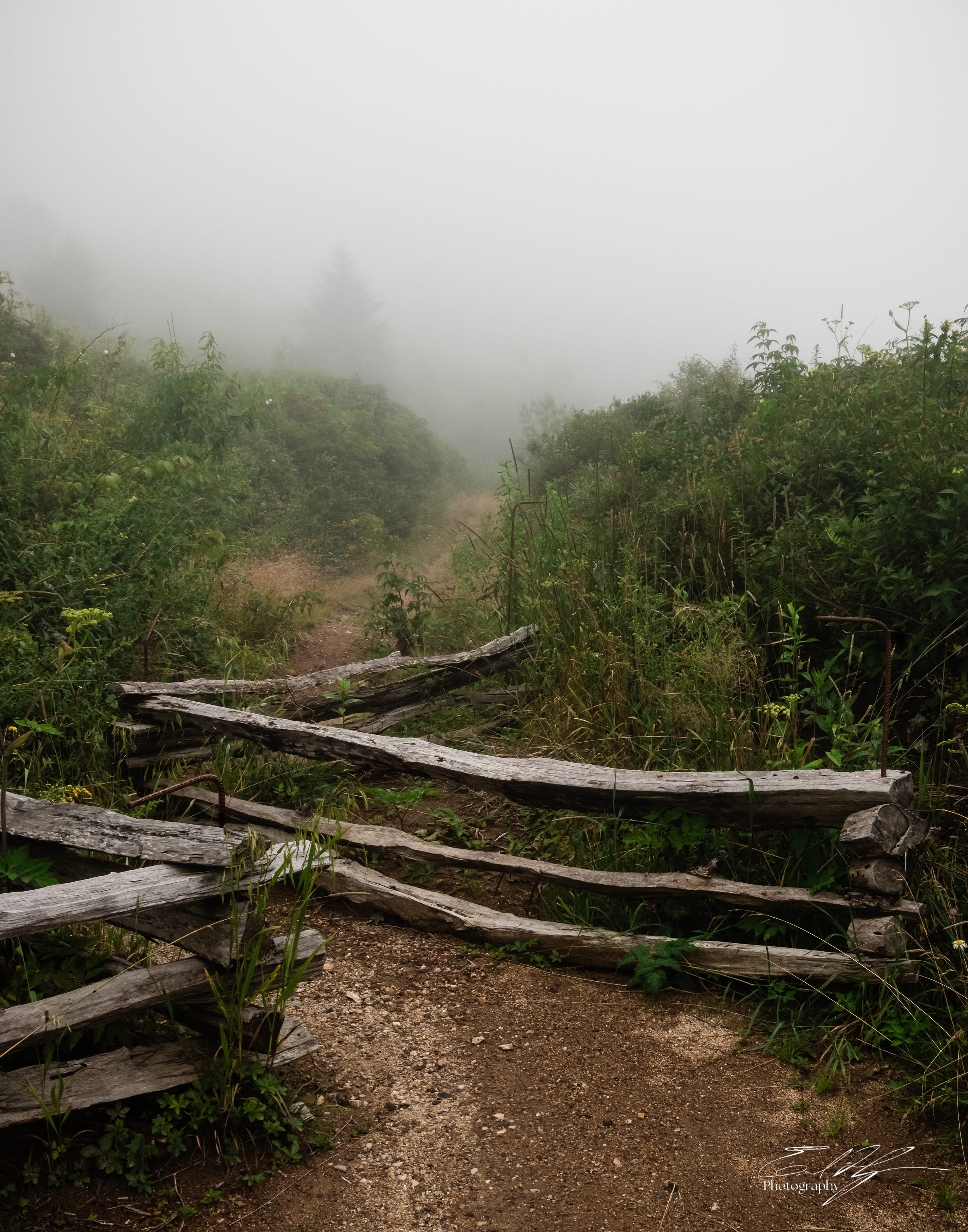
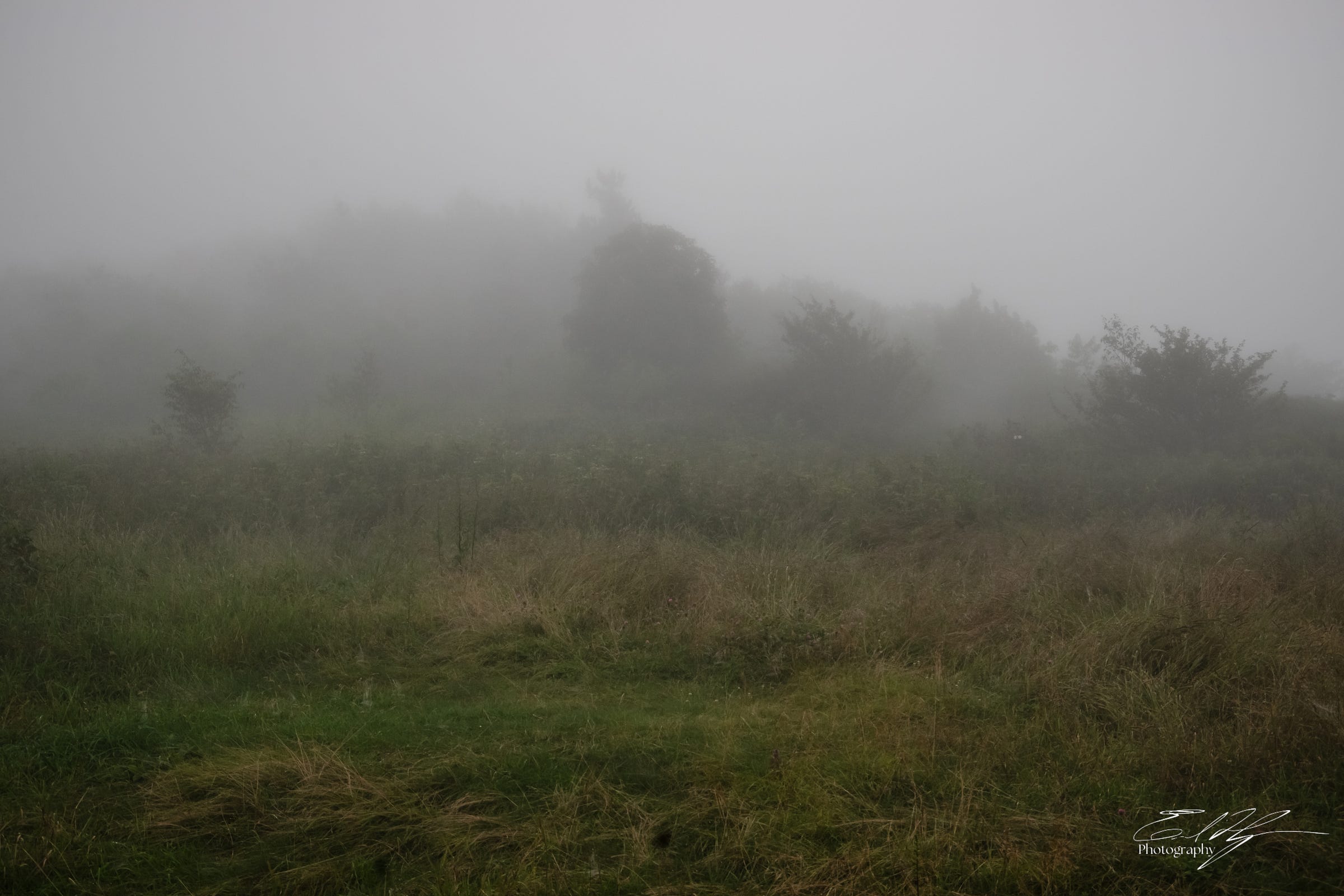
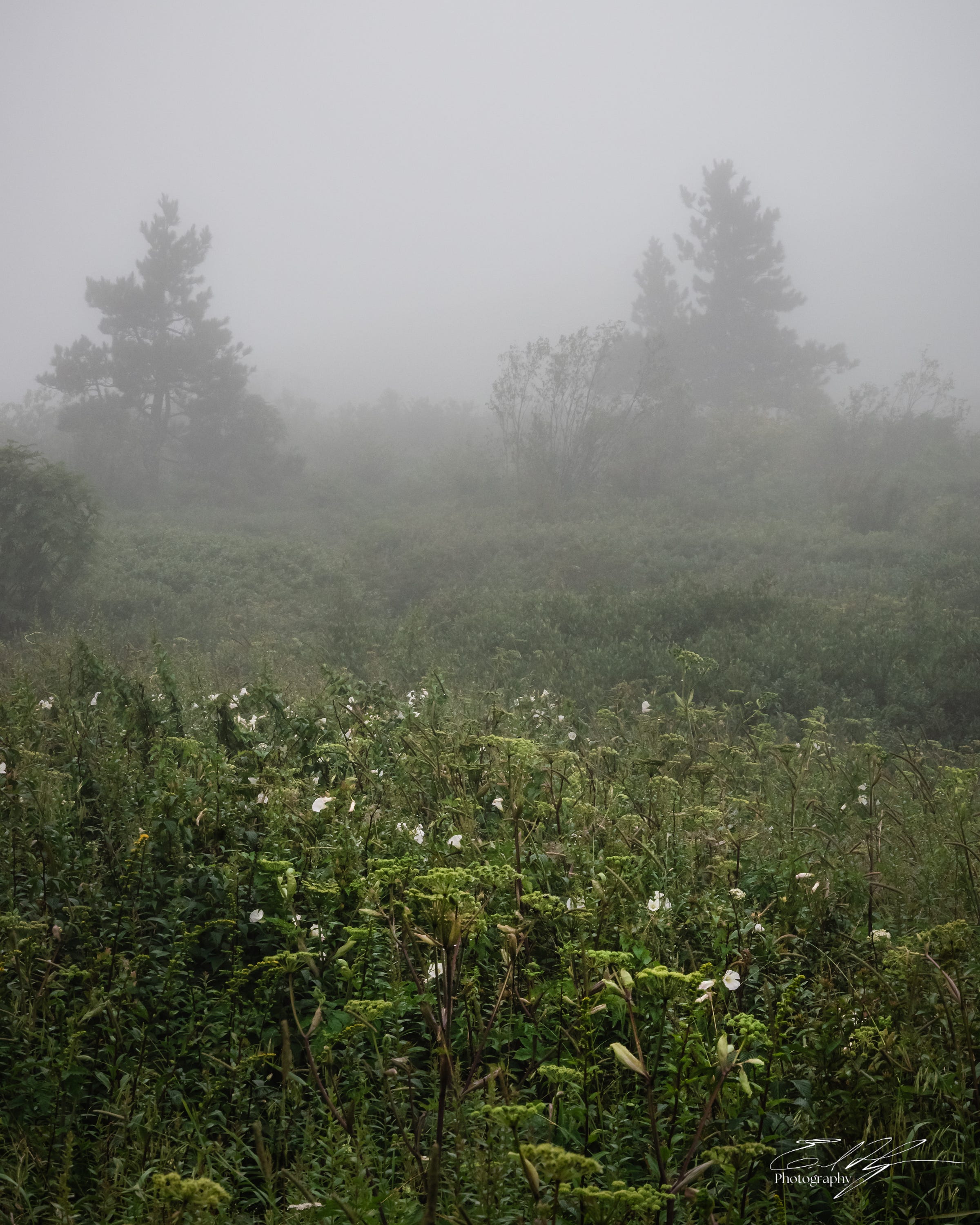



Beautiful melding of past and present and memory and magic. Awesome stuff!
What a great adventure with your son Erik. The thing about fog is that it makes you look at the things right beside you so much more carefully. Beautiful images of the vegetation and intimate landscapes.